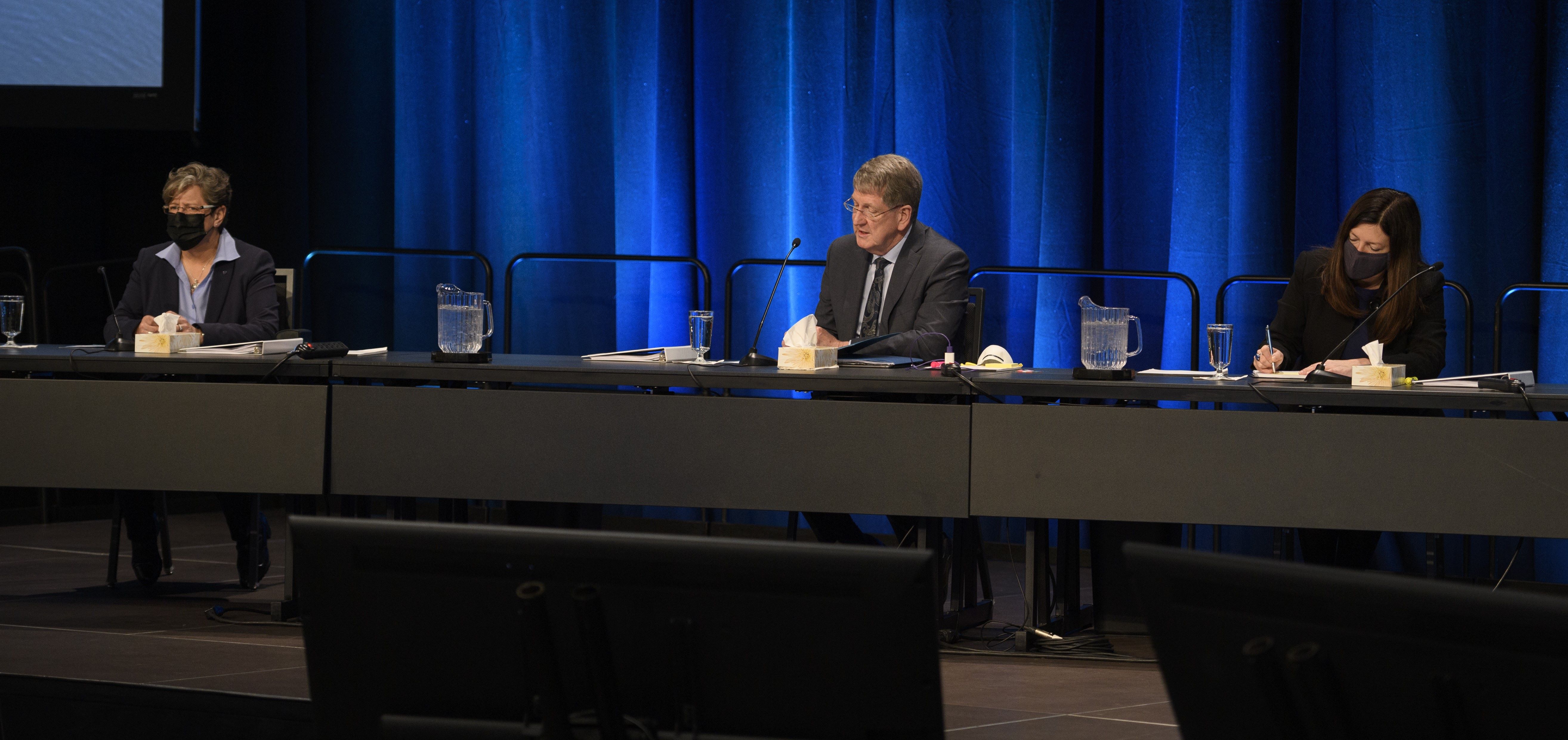 Dispatches
DispatchesWilliam Hibbitts is JURIST’s Deputy Editorial Director. He files this report from Halifax, Nova Scotia.
Yesterday, March 30, the Mass Casualty Commission investigating the 2020 Nova Scotia spree shooting released its final report, marking the culmination of a prolonged investigation into Canada’s worst mass shooting and the RCMP’s ignominious response to it. In a country where mass shootings are particularly rare, the Commission’s work has garnered significant attention as Canadians debate how best to prevent another occurrence.
Nearly three years ago, on April 18 and 19, 2020, gunman Gabriel Wortman killed 22 people in various communities around northwest Nova Scotia. The shootings began after Wortman attacked his common law spouse and trapped her in his mock-police vehicle, a decommissioned police car modified to resemble an authentic RCMP cruiser. After she escaped the vehicle and ran into the woods, Wortman drove away, carrying out the attacks over a 13-hour period while using his mock cruiser to avoid detection. The RCMP ended the rampage when they found and neutralized Wortman at a gas station, ending the deadliest spree killing in Canadian history.
The RCMP faced a deluge of criticism over their response to the shootings. Families of those killed and Nova Scotian citizens decried the fact that the RCMP never sent out an emergency alert warning those in range of the shooter of what was happening. Instead, the RCMP sent out “eight tweets,” “several Facebook messages,” and an “email media release” according to the Commission’s report. Canadians also questioned why it took the RCMP more thirteen hours to stop a lone gunman. In response, the Canadian federal and Nova Scotian governments created the Mass Casualty Commission to address citizen concerns and to improve police and government responses to mass killings.
The Commissioners, Former Chief Justice of Nova Scotia J. Michael MacDonald, Former Fredericton Police Chief Leanne J. Fitch, and constitutional lawyer Dr. Kim Stanton, summarized the final report’s findings in a livestreamed event. The three spoke of the need to proactively prevent instances of mass violence, improve communication between government agencies and the public, and to reform the culture of the RCMP and policing in Nova Scotia.
The final report spans seven volumes plus an executive summary. It provides 130 recommendations designed to improve the response to mass casualty incidents. The recommendations say that police ought to publicly warn populations at risk of harm by means “which are issued to the location, scale, and duration of a threat.” In addition, the report asserts that police should establish a clear chain of command when dealing with mass casualty incidents.
The most sweeping recommendations are those that deal with the RCMP’s structure. One says that the RCMP must be transparent about its management operations and steps taken to address “unhealthy” aspects of its culture. This recommendation is premised on the assertions that RCMP management does not effectively respond to criticism of their decisions, police practices, and systemic discrimination in the institution. The report even concludes that a “restructuring” of the RCMP may be in order, where various policing activities could be reassigned to existing or new police agencies.
The report also says that the federal government should ban all semi-automatic handguns and rifles, revoke the licenses of those convicted with “domestic violence or hate-related offences,” and suspend the licenses of those charged with such offenses until they are found not guilty at trial or can prove they are not a danger to others.
Also of note are the commission’s recommendations regarding intimate partner violence (IPV) and violence against women. These recommendations come from the fact that Wortman had a yearslong history of domestic abuse and began his attack with an instance of IPV. The commissioners called Wortman’s abuse a “red flag” that was overlooked by police.
Commentators also criticized the RCMP’s treatment of Wortman’s common law spouse and survivor of his abuse, Lisa Banfield, after they charged her with supplying ammunition to Wortman. Specifically, the commission recommended that police and prosecutors exercise care when deciding whether to charge a survivor of IPV so that they do not fear reporting the violence to police. The report also decried instances of victim-blaming that could hamper IPV investigations and called for police and governments to produce materials and programs tailored to prevent it.
The final report contains both systematic and targeted reforms designed to prevent and stop mass killings in Canada. Given the sweeping and societal-level nature of some recommendations, the report does not always provide specifics and relies upon governmental and community actors to implement its overarching goals. It remains to be seen how Canadian authorities will handle the next mass shooting in light of the Mass Casualty Commission’s report, only then will we be able to assess the quality and accuracy of its recommendations.

